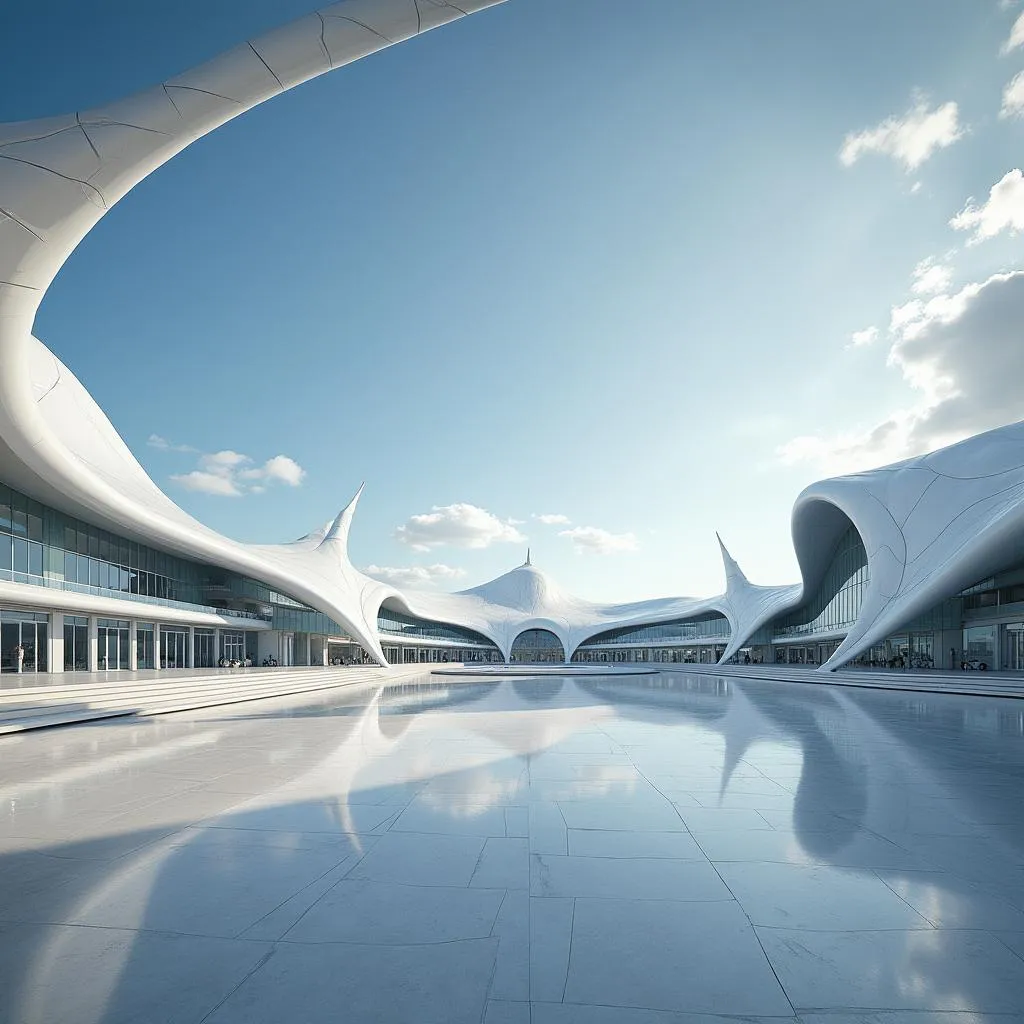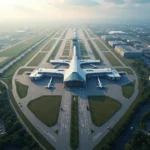Montreal Mirabel International Airport (YMX), often simply called Mirabel, evokes a sense of awe and intrigue. Once envisioned as a global aviation hub, this colossal airport situated 40 kilometers north of downtown Montreal, Canada, has a story marked by both ambition and adaptation. This article delves into the captivating history of Montreal Mirabel Airport, its current status, and the exciting possibilities that lie ahead.
 Modern architecture of Montreal Mirabel Airport terminal
Modern architecture of Montreal Mirabel Airport terminal
A Dream Takes Flight: The Origins of Mirabel
In the 1960s, air travel was experiencing a meteoric rise, and Montreal, as Canada’s largest city at the time, needed an airport to match its ambitions. The existing Montreal-Dorval Airport was struggling to cope with the surge in passenger traffic. A bold vision was born – to construct a brand-new airport that would not only accommodate current needs but also anticipate future growth.
Thus began the ambitious project of Montreal Mirabel International Airport. Land was acquired on a grand scale – a staggering 390 square kilometers, making it one of the largest airports in the world by land area. Construction commenced in 1969, fueled by the belief that Mirabel would become a cornerstone of international aviation.
 Historical photo of Montreal Mirabel Airport under construction
Historical photo of Montreal Mirabel Airport under construction
Mirabel Takes Off: Early Operations and Challenges
Montreal Mirabel Airport officially opened its doors on October 4, 1975, welcoming the world to its modern facilities. The airport boasted a futuristic design, including a multi-level terminal building connected to satellites by a sophisticated automated people mover system. It was a marvel of engineering and architectural ingenuity.
However, the optimistic projections that underpinned Mirabel’s creation did not fully materialize. The 1970s oil crisis, coupled with the introduction of longer-range aircraft that could bypass Montreal on transatlantic flights, led to a plateau in passenger growth.
Shifting Winds: The Decline of Passenger Traffic
As the years passed, Mirabel faced growing challenges. Airlines found it more economical to operate from the closer and more conveniently located Dorval Airport. Passenger traffic at Mirabel stagnated, and the once-bustling airport became eerily quiet.
In 2004, a difficult decision was made. All scheduled passenger flights were transferred back to Montreal-Dorval Airport, which was renamed Montreal-Pierre Elliott Trudeau International Airport. Mirabel transitioned into a cargo airport and an aerospace hub, its passenger terminals standing as a poignant reminder of unfulfilled potential.
 Aerial photograph of cargo planes at Montreal Mirabel Airport
Aerial photograph of cargo planes at Montreal Mirabel Airport
A New Chapter: Mirabel’s Cargo Hub and Aerospace Cluster
While Mirabel’s dream of becoming a major passenger hub may have faded, the airport has carved out a new and vital role. It has evolved into a key cargo airport, handling a significant volume of airfreight, particularly in the aerospace and pharmaceutical industries.
Furthermore, Mirabel has become home to an impressive aerospace cluster, attracting major industry players like Bombardier, Pratt & Whitney Canada, and CAE. The airport’s vast space, specialized infrastructure, and strategic location have made it an ideal location for manufacturing, maintenance, and research and development in the aerospace sector.
Looking Ahead: The Future of Montreal Mirabel Airport
What does the future hold for Montreal Mirabel Airport? While a return to its original vision of a bustling passenger hub seems unlikely, the airport is well-positioned to thrive as a multimodal transportation center. Its existing cargo operations are expected to grow, driven by the expansion of e-commerce and the increasing demand for faster shipping times.
Moreover, Mirabel’s strategic location and vast land reserves present unique opportunities for development. There have been discussions about creating an intermodal logistics hub, connecting air, rail, and road transportation networks. This would further enhance Mirabel’s role as a key player in global supply chains.
Conclusion: Mirabel’s Enduring Legacy
Montreal Mirabel Airport stands as a testament to the ambition and vision of a bygone era. While it may not have fulfilled its initial destiny, it has adapted and transformed, becoming a vital cargo hub and a cornerstone of Canada’s aerospace industry.
As we look to the future, Montreal Mirabel Airport holds the promise of continued growth and evolution. Its vast potential, combined with its strategic location and ongoing development, ensures that Mirabel will remain a significant player in the world of aviation and transportation for many years to come.

